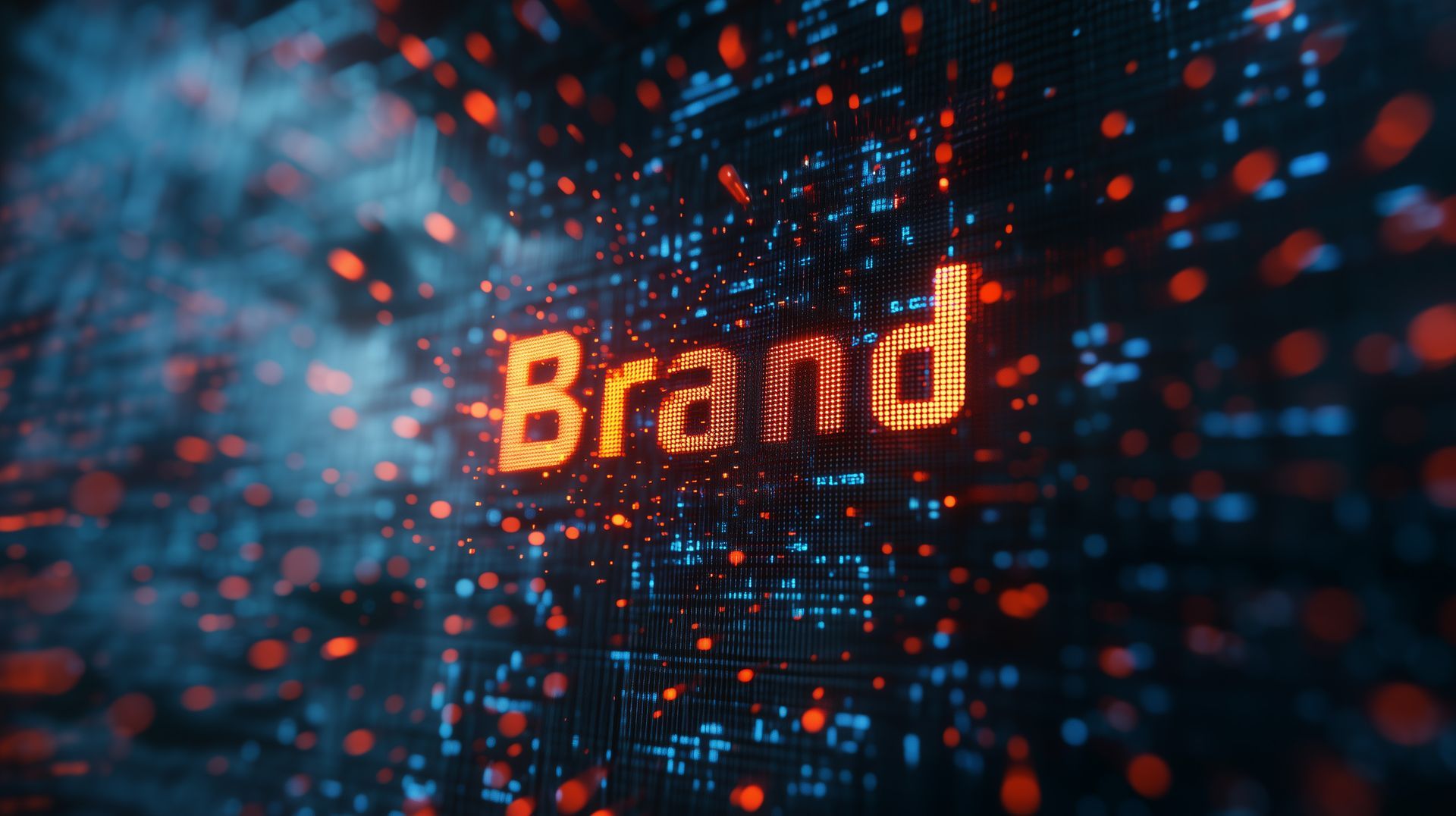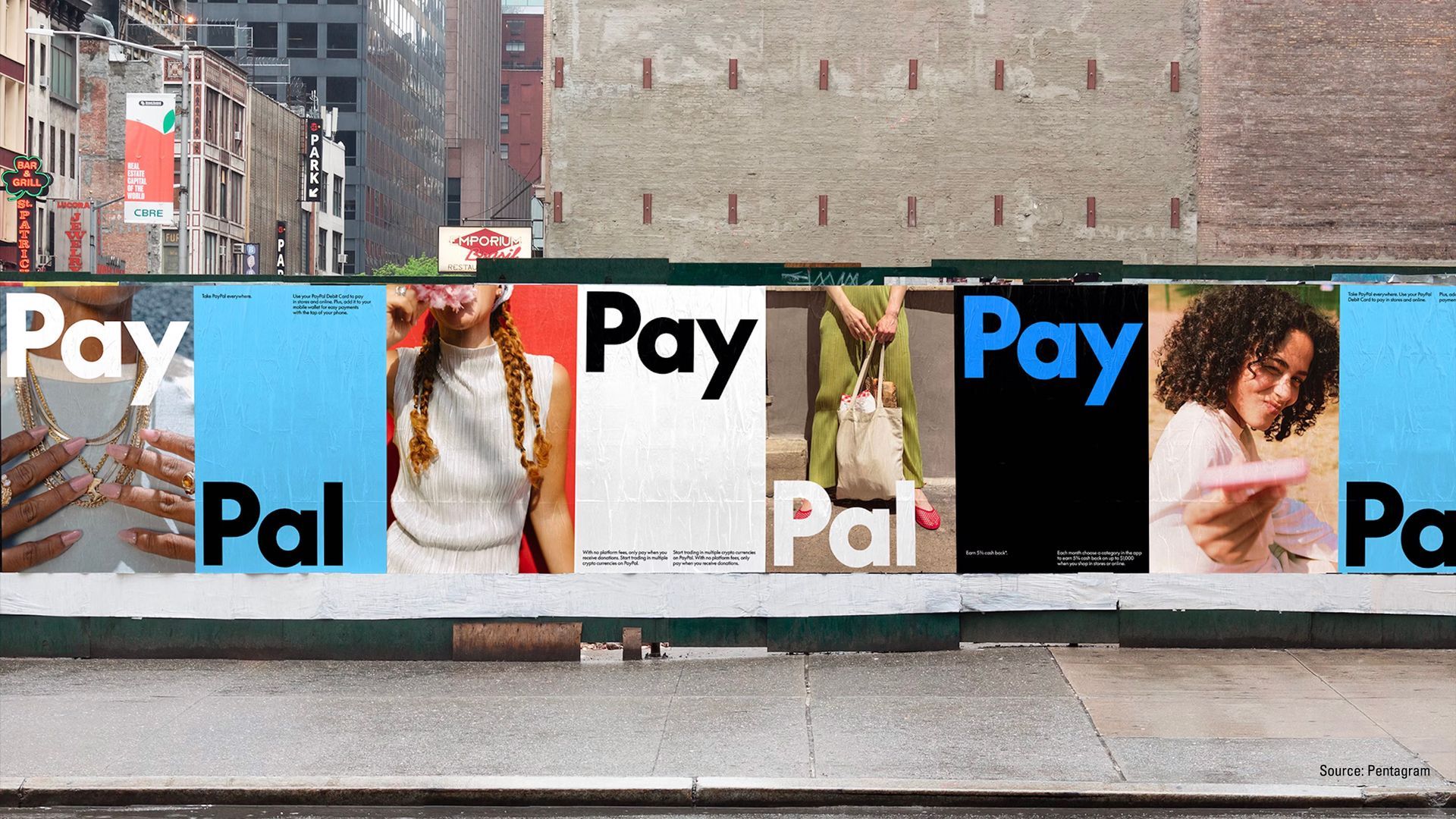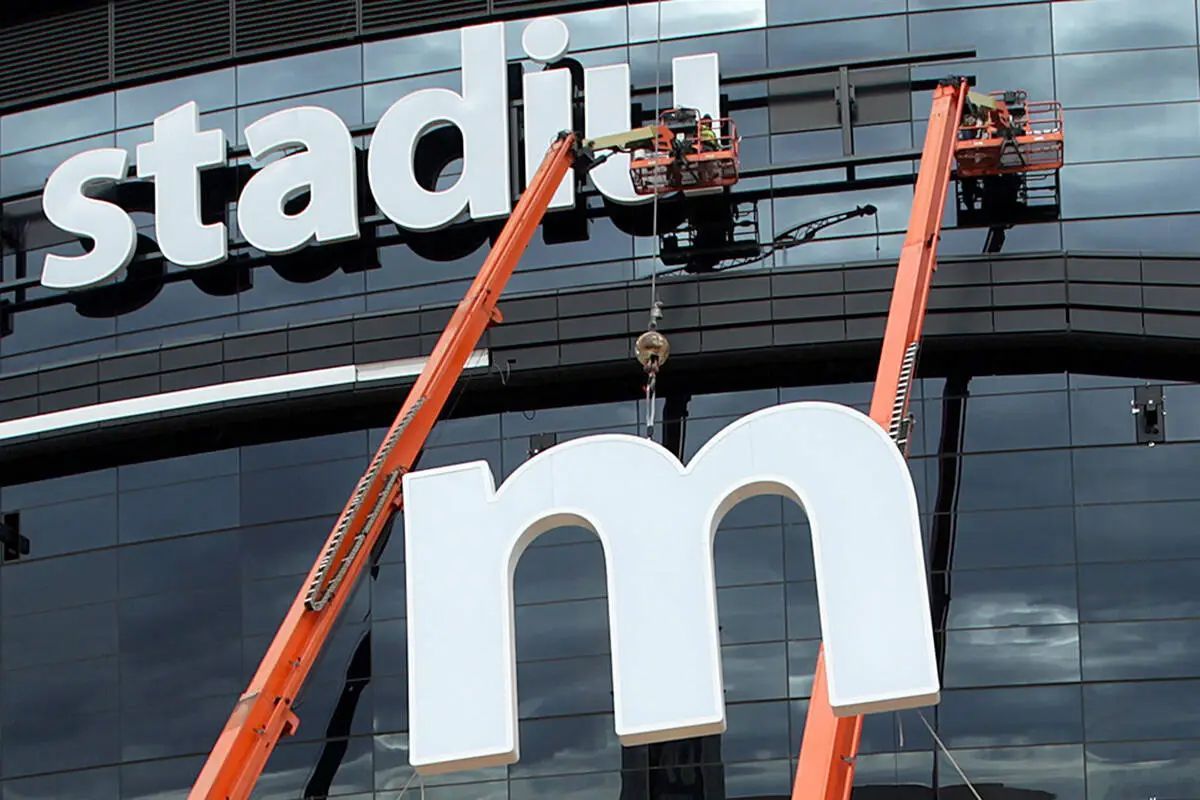HUMANIZE TECH
Give your tech brand a soul.
Welcome to Humanize Tech, the resource hub for technology leaders who grasp the strategic importance of branding.
Any tech brand can perform better if it connects with people on an emotional level. If it communicates meaning, not just features. If it's human. This is the place to find the tools, tips, and resources you need to craft stories that humanize your tech brand. Enjoy.

Brand transformation is more than linguistic gymnastics — it's a multidimensional shift that requires both visual and verbal integration to be fully understood and executed. As branding professionals, we often find ourselves at the intersection of words and imagery, negotiating the complex relationship between what is said and what is seen. Beyond Words: The Dual Nature of Brand Understanding When we consider how brands evolve and transform, we must acknowledge that positioning and messaging alone cannot capture the full essence of a rebrand. That's because a brand also lives in the visual impact of its logo, the emotional response to its color palette, the tactile experience of its products, and the psychological associations formed through consistent imagery. These elements create meaning in ways that transcend verbal explanation. This integrated nature of brand understanding presents both challenges and opportunities for brand strategists and agencies. Those who rely solely on brand messaging frameworks often miss the deeper, more intuitive connections that visual elements forge with audiences. Conversely, those who neglect verbal precision may create beautiful but meaningless brand experiences. The Strategist's Dilemma This reality creates a fascinating paradox for brand strategists. On one hand, it's a blessing — those who master the integration of visual and verbal thinking possess a competitive advantage that purely analytical thinkers cannot match. They can navigate the subtleties of brand transformation with a more complete toolkit, sensing shifts in cultural meaning that might be invisible to others. On the other hand, it presents a curse — how do we communicate about something that partially exists beyond the realm of words? How do we justify decisions that are partly intuitive? How do we demonstrate value when some of the most important aspects of our work resist straightforward measurement or explanation? Embracing Integrated Thinking The most successful brand transformations occur when strategists embrace both modes of thinking: Understanding the rational and emotional components of brand perception Recognizing when to prioritize visual impact over verbal explanation (and vice versa) Developing frameworks that respect both analytical rigor and creative intuition Communicating in ways that engage both logical and visual processing Moving Forward As the branding landscape continues to evolve, the integration of visual and verbal thinking becomes not just advantageous but essential. The brands that resonate most deeply with audiences are those that achieve coherence across all dimensions of experience. By acknowledging the limitations of purely linguistic approaches and embracing the full spectrum of how meaning is created, brand strategists can navigate transformation more effectively—even if they sometimes struggle to put into words exactly why something works. The Speak! Approach: Integration in Action At Speak!, we've built our entire agency model around the principle that visual identity and messaging strategy must be conceived and developed in concert — never in isolation. This integrated approach isn't just a philosophical stance; it's the foundation of our process and the key to our success in transforming brands. Rather than having verbal and visual specialists only intersect when work is handed off, we are cross-disciplinary teams where messaging strategists and visual designers work side by side from day one. Our brand strategy function (that's me) leads stakeholder interviews and workshops but our art director is always on the call and not just as a passive listener. Engaged. Asking hard questions. Poking holes. This ensures that every strategic decision considers both dimensions simultaneously. The benefits of our integrated approach are evident in the results we deliver: Greater Coherence : When messaging and visuals grow from the same strategic foundation, they naturally reinforce each other, creating a brand experience that feels seamless and purposeful. Deeper Resonance : Brands that speak to both the rational mind (through clear messaging) and the intuitive mind (through visual impact) create more powerful and lasting impressions with audiences. Faster Alignment : Our clients spend less time reconciling conflicting approaches from different specialists and more time refining a unified strategic direction. Unexpected Solutions : The creative tension between verbal and visual thinking often leads to breakthrough ideas that neither approach would have discovered independently. Our clients often tell us that this integrated process not only delivers superior results but also provides them with a new lens through which to understand their own brands. By experiencing the power of visual-verbal synergy in action, they gain insights that transform not just their brand assets but their entire approach to brand management.

For tech startups, creating a Minimum Viable Product (MVP) — the stripped-down version of your product that allows you to test core assumptions with real users — is a common approach to product development. But what about your brand? Enter the Minimum Viable Brand (MVB): the essential elements needed to present your company professionally and connect with early customers, without over-investing in elaborate brand development.

As the United States prepares for a wave of mergers and acquisitions (M&A) in 2025, driven by anticipated regulatory relaxations under the incoming Trump administration, businesses must focus on more than just deal-making. While the financial and operational aspects of an M&A transaction often take center stage, the importance of strategic rebranding should not be underestimated. With studies showing that 70% to 90% of mergers and acquisitions fail to achieve their intended goals, often due to cultural mismatches and poor integration planning, a thoughtfully planned and executed rebrand can streamline costs, preserve brand equity, and set the stage for post-merger success. The Role of Rebranding in M&A Rebranding during a merger or acquisition isn’t just about updating logos or creating new marketing materials; it’s about unifying two entities under a cohesive identity. This process is crucial for: Building Internal Alignment: Employees from both organizations must rally behind a shared mission, vision, and values. Reassuring Stakeholders: Customers, investors, and partners need to understand the benefits of the merger or acquisition. Preserving Brand Equity: Proper rebranding ensures that the strengths of both brands are retained while creating something greater than the sum of its parts. Reducing Confusion: A clear and consistent rebrand mitigates market confusion, safeguarding the trust and loyalty of the audience. Planning for Success: The Cost-Saving Benefits of Early Rebrand Preparation One of the biggest challenges in an M&A rebrand is cost management. Without proper planning, the rebrand can spiral into an expensive, disjointed effort. However, engaging experts like our partner BrandActive, a leader in planning and implementing rebrands for major corporations, can significantly reduce costs and ensure a smooth transition. Key components to keeping rebranding costs in check include: Comprehensive Brand Audits: Identifying all branded assets and touchpoints to avoid overlooked elements that could lead to rework or missed deadlines. Phased Implementation Plans: Balancing speed with quality by prioritizing high-impact changes and rolling out others over time. Vendor Optimization: Leveraging economies of scale and reducing duplication of efforts by consolidating supplier relationships. Crafting a Compelling Narrative: The Story Behind M&A Success Every merger or acquisition has a story, and telling it effectively can determine the success of the rebrand. The narrative should: Highlight the Strategic Rationale: Explain why the merger or acquisition occurred and how it benefits stakeholders. Emphasize Shared Values and Vision: Showcase the compatibility between the two organizations and their united goals. Address Audience Concerns: Reassure customers, employees, and partners about continuity, improvements, and opportunities. Inspire Excitement: Generate enthusiasm by presenting the merger as a step forward for innovation, service, and impact. 10 Key Steps to Selecting an M&A Branding Agency Choosing the right branding agency is critical to a successful M&A rebrand. Here are ten steps to keep in mind: Understand Your Needs: Clearly define the scope of your rebrand, including objectives, timeline, and budget. Consider using a rebranding checklist to guide your process. Assess Experience: Look for agencies with a proven track record of handling complex M&A rebrands. Evaluate Strategic Capabilities: Ensure the agency can provide more than just creative services by offering strategic planning, asset audits, and phased rollout expertise. Review Portfolio and Case Studies. Examine previous projects to gauge the agency’s ability to deliver cohesive, impactful rebrands. Check References: Speak to past clients to understand their experience working with the agency. Prioritize Communication: Choose an agency with a collaborative approach and a clear communication process. Ensure Cultural Fit: Select a partner whose values align with your organization’s culture and goals. Request a Detailed Proposal: Ask for a roadmap outlining the agency’s approach, timeline, deliverables, and costs. Consider Integration Expertise: The agency should be adept at integrating branding efforts across various channels and platforms. Think Long-Term: Choose a partner who will support your brand’s evolution beyond the initial rebrand. To ensure a positive and meaningful merger or acquisition companies must plan beyond the balance sheet. Strategic rebranding is an opportunity to redefine and elevate the combined entity’s identity, ensuring a seamless transition and long-term success. By planning early, crafting a compelling story, and partnering with implementation experts, organizations can unlock the full potential of their M&A efforts while mitigating costs and preserving stakeholder trust.

Jaguar’s recent rebrand has stirred up quite a debate among branding experts, car enthusiasts, and anyone paying attention to the automotive industry. It’s not every day that a legacy brand with nearly a century of heritage makes such a dramatic pivot. And dramatic is the right word for what Jaguar has done: the brand has chosen to shift entirely toward an electric future, leaving behind not only its combustion engines but also its loyal (and dwindling) audience. On the surface, this move is bold, visionary, and forward-looking. But the execution of the rebrand, in my view, misses a critical mark.

Generative AI has revolutionized content creation by automating processes that once took designers and creatives hours or even days. While this technology can be a game-changer, especially for brands, it introduces potential risks regarding brand consistency, compliance, and legal exposure. To harness the power of AI-generated visuals while protecting a brand’s integrity, establishing and adhering to AI brand guidelines is critical.

A brand refresh can be an essential strategy for technology companies aiming to stay competitive and relevant, as demonstrated by PayPal’s recent visual identity update . This move underscores a key principle that we embrace at our agency: differentiating through color while remaining aware of market dynamics and customer expectations.

Your website often serves as the first point of contact between your brand and potential clients. Especially for B2B technology companies, your website must clearly communicate not just what you offer, but why it matters. An effective website homepage doesn't just list features — it tells a compelling story that resonates with your audience. This starts by answering four fundamental questions: 1. What do you do? (Clarity) 2. What makes it awesome? (Value) 3. Is it for me? (Relevance) 4. Why yours over theirs? (Differentiation) Let’s dive into each of these questions and explore why they’re essential for any B2B tech website and how you can effectively answer them.

Design, as a visual and functional language, offers abundant approaches to convey messages, evoke emotions, and create memorable experiences. Two prominent design philosophies that often stand at opposing ends of the spectrum are minimalism and maximalism. Both styles have their distinct merits and drawbacks, and understanding the nuances of each can be pivotal in humanizing brands and crafting compelling brand narratives. Minimalism: The Art of Less is More Minimalism is characterized by simplicity, clean lines, and a restrained color palette. This approach strips away the superfluous to focus on the essential elements, ensuring clarity and functionality. Pros of Minimalism Clarity and Focus: Minimalist designs are often more straightforward, making it easier for users to understand the core message without distraction. This is especially beneficial for brands aiming to communicate a clear and direct value proposition. Timeless Appeal: Minimalist designs tend to age well, avoiding trends that may quickly become outdated. This longevity is advantageous for brands looking to establish a lasting identity. Enhanced Usability: With fewer elements competing for attention, minimalist designs can improve user experience by making interfaces more intuitive and navigation more straightforward. Sophistication and Elegance: The refined aesthetics of minimalism can evoke a sense of sophistication and luxury, appealing to audiences who appreciate understated elegance. Cons of Minimalism Perceived Blandness : The simplicity of minimalism can sometimes be mistaken for blandness, especially if not executed with a keen eye for detail and creativity. Limited Expression: Minimalism’s constraint on elements can limit the designer’s ability to convey complex or multifaceted brand stories, potentially resulting in a less emotionally engaging experience. Risk of Homogeneity: When many brands adopt minimalist aesthetics, there’s a risk of designs becoming homogeneous, making it harder for individual brands to stand out. Maximalism: The Celebration of Excess Maximalism, on the other hand, embraces complexity and richness. It’s characterized by bold colors, intricate patterns, and a plethora of visual elements. This approach revels in diversity and abundance, creating vibrant and dynamic designs. Pros of Maximalism Expressive and Engaging: Maximalist designs are often more visually stimulating and can convey a more dynamic and engaging brand story. This is particularly useful for brands wanting to evoke strong emotional responses. Distinctiveness: The bold and eclectic nature of maximalism makes it easier for brands to carve out a unique visual identity that stands out in a crowded market. Versatility: Maximalism allows for a wide range of visual experimentation, accommodating diverse ideas and cultural influences. This versatility can make the brand appear more inclusive and globally minded. Rich Storytelling: The abundance of elements in maximalist designs can be used to convey complex narratives and cultural richness, making it ideal for brands with a deep heritage or a multifaceted story. Cons of Maximalism Risk of Overwhelm: The very complexity that defines maximalism can also overwhelm users, making it harder to navigate and digest the information presented. Higher Maintenance: Maximalist designs can require more frequent updates and adjustments to stay relevant and engaging, increasing the long-term maintenance efforts. Potential Clutter: Without careful curation, maximalist designs can quickly descend into clutter, detracting from the overall user experience and potentially diluting the brand message. Visual Variation and Brand Drift: Complex visual systems have a steeper learning curve and risk misapplication by marketing constituents and partners. Humanizing Brands Through Design When it comes to humanizing brands, both minimalism and maximalism offer unique pathways. The key is understanding the brand’s core values, target audience, and the emotions you wish to evoke. Minimalism for Humanizing Brands Minimalism can humanize a brand by emphasizing authenticity and transparency. The simplicity and clarity inherent in minimalist designs can foster a sense of trust and approachability. Brands that want to appear sincere, focused, and committed to quality over quantity can benefit from a minimalist approach. For instance, a tech company emphasizing user-friendly interfaces and seamless experiences might use minimalism to highlight these qualities. Maximalism for Humanizing Brands Maximalism, with its rich storytelling capabilities, can humanize brands by showcasing their personality and cultural depth. This approach is perfect for brands that have vibrant histories, diverse product lines, or a strong cultural connection. By leveraging bold visuals and intricate details, maximalism can make a brand feel more relatable and lively. A brand in the entertainment industry, for example, might use maximalism to convey its dynamic and multifaceted nature, engaging audiences with a visually rich narrative. Finding the Balance Ultimately, the choice between minimalism and maximalism should be guided by the brand’s identity and the audience’s preferences. In some cases, a hybrid approach can offer the best of both worlds, combining the clarity of minimalism with the expressive power of maximalism. By thoughtfully integrating elements of both styles, brands can create designs that are both visually appealing and deeply human, resonating with audiences on multiple levels. In conclusion, both minimalism and maximalism have their distinct advantages and drawbacks. The key lies in understanding the brand’s story, the audience’s expectations, and the context in which the design will be experienced. By carefully considering these factors, brands can choose the approach that best humanizes their narrative and creates a lasting impact.

In high-tech markets, consumer preferences and market trends evolve rapidly. As a result, companies must remain vigilant about their brand’s relevance and resonance. One way to maintain or enhance brand appeal is through strategic brand modifications. However, the terms "rebrand" and "brand refresh" are often used interchangeably, leading to confusion. Understanding the distinction between these two concepts is crucial for making informed decisions that align with your business goals. What is a Rebrand? A rebrand is a comprehensive transformation of a company's identity. This process involves altering foundational elements such as the company name, logo, visual design, brand messaging, and sometimes even the core values and mission statement. Rebranding is typically undertaken for profound reasons, such as: Market Shifts: When market dynamics change significantly, a rebrand may be necessary to stay competitive. For instance, a company that started in one industry but has pivoted to another may need a rebrand to reflect its new direction. Mergers and Acquisitions: When companies merge or one acquires another, a rebrand can help create a unified identity that represents the new entity. Negative Public Perception: If a brand has suffered from a tarnished reputation, a rebrand can help distance it from past issues and project a fresh image. Global Expansion: Entering new markets with different cultural nuances may require a brand to rebrand to ensure cultural relevance and avoid misunderstandings. Examples of Rebranding One notable example is Google, which rebranded its corporate structure to Alphabet Inc. in 2015. This rebrand was a strategic move to separate its core search engine business from its other ventures and to signal its expansion into various industries, such as biotechnology and autonomous vehicles. Another example is IBM’s transformation from a hardware-centric company to a leader in cloud computing and AI. In the 1990s, IBM shifted its focus from hardware to software and services, rebranding itself as a technology consulting company to better align with market trends and customer needs. What is a Brand Refresh? A brand refresh, on the other hand, is a subtler update to an existing brand. It involves refining and modernizing elements of the brand to keep it current and appealing, without overhauling its core identity. Brand refreshes are undertaken for reasons such as: Staying Current: As design trends evolve, a brand refresh ensures that the company’s visual and messaging elements remain contemporary. Enhanced Relevance: Minor tweaks in brand positioning or messaging can help maintain relevance with the target audience. Expanded Offerings: When a company expands its product or service lines, a refresh can help incorporate these new elements into the existing brand framework. Examples of Brand Refreshes Microsoft’s refresh of its Windows logo in 2012 is a prime example. The update modernized the logo’s design, transitioning from the colorful, wavy flag to a more minimalist and flat design, aligning with the then-new Metro design language introduced with Windows 8. Another example is Intel’s brand refresh in 2020. While retaining its iconic blue color, Intel introduced a new logo and visual identity to reflect its evolution and innovations in areas like AI, 5G, and edge computing, ensuring the brand remained relevant in the rapidly changing tech landscape. Key Differences Between a Rebrand and a Brand Refresh Understanding the distinction between a rebrand and a brand refresh involves recognizing the scope, purpose, and impact of each process. Scope Rebrand: A rebrand is comprehensive, encompassing all aspects of the brand, from visual identity to core messaging and sometimes even the company’s name. It’s a top-to-bottom overhaul aimed at repositioning the company entirely. Brand Refresh: A brand refresh is more focused and limited in scope. It typically involves updating specific elements like the logo, color palette, typography, or tagline, while keeping the overall brand essence intact. Purpose Rebrand: The purpose of a rebrand is to signify a fundamental shift in the company’s direction, market positioning, or identity. It’s often a response to significant internal or external changes. Brand Refresh: The purpose of a brand refresh is to keep the brand vibrant and relevant. It’s about making necessary adjustments to stay in tune with evolving trends and consumer preferences. Impact Rebrand: The impact of a rebrand is profound, affecting all stakeholders, from employees to customers and investors. It requires extensive communication and often involves re-educating the market about the new brand identity. Brand Refresh: The impact of a brand refresh is more subtle but still significant. It helps reinforce the brand’s relevance and appeal without causing confusion among existing customers. When to Choose a Rebrand vs. a Brand Refresh Deciding between a rebrand and a brand refresh depends on the specific circumstances and objectives of your business. Choose a Rebrand If: Your brand no longer reflects your company’s values, vision, or market position. You’re undergoing significant changes such as mergers, acquisitions, or entering new markets. You need to distance your brand from negative perceptions or past controversies. Choose a Brand Refresh If: Your brand needs a visual or messaging update to stay current and appealing. You’re expanding your product or service offerings and need to reflect these changes. You want to enhance your brand’s relevance without overhauling its core identity. Both rebranding and brand refreshes are powerful tools for maintaining and enhancing your brand’s appeal. While a rebrand involves a complete transformation to signal significant changes, a brand refresh focuses on modernizing and fine-tuning the existing brand. By understanding the differences and carefully considering your business objectives, you can choose the right approach to ensure your brand remains strong, relevant, and resonant.

From FinTech and MarTech to EdTech and InsurTech, the B2B SaaS (Software as a Service), is flooded with vendors seeking to stand apart. A well-crafted brand strategy had never been more crucial. Strong positioning and messaging, combined with a unique visual identity, not only differentiates a company from its competitors but also builds trust, credibility, and emotional connections with its target audience. Here, we delve into the best practices for B2B SaaS companies to build and maintain a compelling brand. 1. Understand Your Target Audience The foundation of any successful brand strategy is a deep understanding of the target audience. B2B SaaS companies must identify the real humans who are making the decisions and segment their audience based on industry, company size, pain points, and buying behavior. This segmentation allows for more personalized and relevant messaging. Example: HubSpot , a leading marketing, sales, and customer service SaaS platform, has a diverse audience ranging from small businesses to large enterprises. HubSpot tailors its messaging to address the specific needs of each segment, providing targeted solutions and resources. 2. Craft a Clear and Compelling Value Proposition A value proposition succinctly communicates the unique benefits and value that your SaaS product offers. It should address the pain points of your target audience and highlight what sets your product apart from competitors. Example: Slack’s value proposition is "Slack is where work happens." This simple yet powerful statement encapsulates Slack’s core benefit of streamlining team communication and collaboration, making it indispensable for modern workplaces. 3. Develop a Consistent Brand Identity Consistency is key in branding. Your brand identity should be cohesive across all touchpoints, including your website, social media, email marketing, and customer support. This includes visual elements (logo, color scheme, typography) and messaging (tone, voice, key messages). Example: Salesforce , a pioneer in the SaaS industry, maintains a consistent brand identity with its distinctive cloud logo, blue color palette, and approachable, friendly tone of voice. This consistency helps reinforce brand recognition and trust. 4. Humanize Your Brand In the B2B space, it’s easy to focus solely on the technical aspects of your product. However, humanizing your brand can create stronger emotional connections with your audience. Showcase the people behind your company, share customer success stories, and engage in authentic conversations. Example: LogRhythm , known for its cybersecurity platform, underwent a rebrand with the guidance of Speak!. The resulting brand story and visual identity amplifies the confidence the heroes working behind the scenes gain from working with a trusted platform. Focusing on the human impact of the solution created an authentic connection with stressed cyber teams on the front line. 5. Leverage Content Marketing Content marketing is a powerful tool for establishing thought leadership and building trust in the B2B SaaS space. Create valuable, educational content that addresses the challenges and needs of your target audience. This can include blog posts, whitepapers, case studies, webinars, and more. Example: Moz , an SEO software company, has built a strong brand through its extensive content marketing efforts. Their blog, “Moz Blog,” is a go-to resource for SEO professionals, offering insights, tips, and industry updates that demonstrate Moz’s expertise and thought leadership. 6. Utilize Social Proof Social proof, such as testimonials, case studies, and user reviews, can significantly enhance your brand’s credibility. Potential customers are more likely to trust the experiences of their peers than marketing messages from the company itself. Example: Zendesk , a customer service software provider, prominently features customer stories and testimonials on its website. These real-world examples of how companies have benefited from Zendesk’s solutions help build trust and encourage new prospects to take action. 7. Invest in a Memorable Logo and Visual Identity Your logo and visual identity are the face of your brand. They should be memorable, distinctive, and reflective of your company’s values and personality. A well-designed logo can leave a lasting impression and enhance brand recall. Example: Intercom , a customer messaging platform, has a simple yet memorable logo featuring a smiley face. This logo, combined with a clean and modern visual identity, effectively conveys Intercom’s friendly and approachable brand personality. 8. Focus on Customer Experience Exceptional customer experience is a cornerstone of a strong brand. Ensure that every interaction with your customers, from onboarding to support, reflects your brand values and commitment to their success. Happy customers are more likely to become brand advocates. Example: Zoom , the video conferencing software, places a strong emphasis on customer experience. Their user-friendly interface, reliable performance, and responsive customer support have contributed to their reputation as a trusted and beloved brand. 9. Engage on Social Media Social media is not just for B2C companies. B2B SaaS companies can use social media platforms to engage with their audience, share valuable content, and showcase their brand personality. It’s also an excellent channel for customer support and feedback. Example: Adobe Creative Cloud actively engages with its audience on social media platforms like Twitter, LinkedIn, and Instagram. They share tutorials, customer stories, and industry insights, reinforcing their brand as a leader in creative software solutions. 10. Monitor and Adapt Your Brand Strategy Branding is not a one-time effort; it requires continuous monitoring and adaptation. Keep an eye on industry trends, customer feedback, and competitor activities. Be willing to evolve your brand strategy to stay relevant and meet the changing needs of your audience. Example: Atlassian , known for its collaboration and project management software, regularly updates its brand strategy to reflect the evolving needs of its customers. Their recent rebranding efforts included a refreshed visual identity and refined messaging to better align with their mission and values. Bonus Tip: Outside Perspective is Beneficial Following these best practices and learning from successful examples, can help your B2B SaaS companies create a compelling brand that resonates with your target audience. However, tapping the expertise of a specialist brand agency that knows how to ask the right questions and pull the right threads can accelerate your success. Take two minutes to answer a few questions and get a head start on your brand initiative. Speak! will perform an initial brand diagnostic and provide a video synopsis of recommended priorities, opportunities, and candid feedback.





